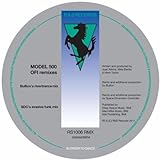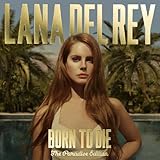John Preston’s been writing for MusicRiot for a few years now, but this year he’s started to concentrate on his work for Vada online magazine and we genuinely wish him all the best with that venture. We’ve managed to lure him back for his take on the five best albums of the year. Give some of these a listen, because John really knows his stuff.
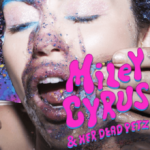 Miley Cyrus – “Miley Cyrus & Her Dead Petz”
Miley Cyrus – “Miley Cyrus & Her Dead Petz”
“Miley Cyrus & Her Dead Petz” is surprisingly sensitive and predominantly mid-tempo with even songs like “Bang My Box” and “Space Boots” being ladled with melancholia and not sounding as you might expect. In a year of Tidal exclusives versus ‘you will buy my album, I don’t care if you pay for streaming’, Miley Cyrus beyonced a brilliant album with minimal fuss for zero pence which anyone with an internet connection could listen to. She continues to piss the right people off and many won’t bother to listen. For someone who grew up with Madonna this is a familiar story and like the gnarly icon herself, Miley Cyrus is far from done.
 Chvrches – “Every Open Eye”
Chvrches – “Every Open Eye”
The Scottish trio have effectively made the third Yazoo album, the one that the eighties synth-duo never got around to finishing. Tight and upright melodies, shining and exhilarating electronics and with Lauren Mayberry’s regional accent punching out its many kiss-offs, “Leave a Trace” builds on what was promised on their 2013 debut and delivers a flawless start-to-finish album of perfect pop songs. Chvrches have perfected the art of making huge records that sound like the past and future colliding.
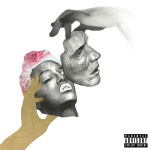 Dawn Richard – “Blackheart”
Dawn Richard – “Blackheart”
Released at the top of the year, the second in a trilogy of albums, “Blackheart” was an often a bleak but breathtakingly beautiful record about redemption. Ultimately uplifting, Dawn Richard manages to cover the old story of hope that’s lost and then found in a new way and within a flinty futuristic soundscape that refuses to conform to traditional R’n’B structures and timeframes. Visionary and fearless, Dawn Richard star continues to rise and rise.
 Lana Del Rey – “Honeymoon”
Lana Del Rey – “Honeymoon”
The oddest pop-star of them all, Lana Del Rey reduces her trademark lyrical tics and sound stylings down to a sticky and claustrophobic pitch-black potion consisting of, you got it, sex, drugs and unrequited love. “Honeymoon” is Del Rey’s most honest and hard-core artistic statement yet with only snatches of camp (“Salvatore” rhymes soft ice cream with limousines) to lift the funereal mood. No longer as needy and as accommodating as before, Lana Del Rey continues to baffle but ultimately proves she is in a league of her own, demanding to be taken seriously.
 Braids – “Deep In the Iris”
Braids – “Deep In the Iris”
“Miniskirt” is a brittle kick in the gut and Braids most focused and attention-grabbing song of their career. Their third album “Deep in the Iris” has a kitchen sink, melodrama quality and riffs on mid-nineties British synth pop bands like Dubstar and Pet Shop Boys pre-slump. Drum ‘n’ bass, euphoric electro-pop choruses and a theme of sexual identity dominate an album that is far lighter and easy to absorb than this might at first suggest; don’t let Braids pass you by.
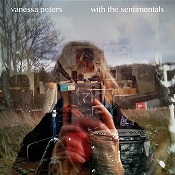 Vanessa Peters released an album in 2006 with her band Ice Cream on Mondays titled “Little Films” and if you wanted a pithy little phrase to describe her songs, that wouldn’t be too far wide of the mark but it’s not quite that simple. Vanessa’s songs describe a world that’s somewhere between Raymond Carver and David Lynch; the songs are vignettes of American life packed with highly visual images and a hint of darkness at the centre. Of the ten songs on the album, six are originals, one is a cover and three are reworkings of earlier album or EP tracks. Three reworkings may seem a bit excessive, but working with The Sentimentals (her European touring band) has created a different perspective on the songs which more than justifies their inclusion on the album.
Vanessa Peters released an album in 2006 with her band Ice Cream on Mondays titled “Little Films” and if you wanted a pithy little phrase to describe her songs, that wouldn’t be too far wide of the mark but it’s not quite that simple. Vanessa’s songs describe a world that’s somewhere between Raymond Carver and David Lynch; the songs are vignettes of American life packed with highly visual images and a hint of darkness at the centre. Of the ten songs on the album, six are originals, one is a cover and three are reworkings of earlier album or EP tracks. Three reworkings may seem a bit excessive, but working with The Sentimentals (her European touring band) has created a different perspective on the songs which more than justifies their inclusion on the album.
The Sentimentals are based in Copenhagen and they are M.C. Hansen (guitars), Nikolaj Wolf (upright bass) and Jacob Chano (drums and percussion). They’ve worked with Vanessa on tour in Europe and the States and last year everyone decided that it was time to immortalise the magic, recording the album live in a couple of Danish studios without any overdubs. The band creates a mellow backdrop throughout the album which allows Vanessa to be close-miked, creating a very intimate setting for a voice which is part early Joni Mitchell, part Suzanne Vega and part Lana del Rey.
The opening song, “Pacific Street” is a cover of a Hem song which the band speeds up and builds around a laser-clean guitar figure. It might not sock you on the jaw, but it leads you gently into the album, hinting at the little treasures within. Of the reworkings, two (“Big Time Underground” and “Fireworks” are from “Little Films”) and tell the stories of variously dysfunctional individuals in relationships; the arrangements have more space and feel more intimate than the originals, allowing the narrative to shine through. “Afford to Pretend” (originally from the “Blackout” EP) goes in the opposite direction, replacing a solo acoustic guitar backing with the full band and a military drumbeat.
“Fickle Friends” and “Light” are both moody pieces, the former having an almost trip-hop feel, while the latter is heavy on reverb and the visual imagery which runs through the album. It’s fair to say that either song would fit perfectly on “Born to Die”. The remaining four songs are classic Vanessa Peters short stories, telling tales of doomed relationships (“Mostly Fictions”), the partner who’s impossible to get close to (the country-tinged “Call You All the Time”), the impossibility of completely closing the door on a chapter of your life (“The Choice”) and the album’s closing track, “Getting By” which is about – well, I think you can work that one out.
The playing on the album is tasteful without ever breaking into showy territory, apart from the lovely guitar solo at the close of “Mostly Fictions” but the songs don’t really need too much embellishment, just a framework to hang them on. If you like your songs, to use a phrase I nicked from the great Scottish singer-songwriter Dean Owens, “somewhere between melancholy and miserable”, then you’re in the right place.
“Vanessa Peters with The Sentimentals” is released on Monday May 11th.
 It goes without saying that each generation gets the pop stars it deserves. Of the ones remaining and still performing, Madonna, Boy George and Prince belong to what could be called my era, not too shoddy. This current batch of kids will eventually become nostalgic about Beyonce, Adele and, I’m sorry, One Direction. In the last five years Taylor Swift has been riding their coat-tails with her persistent country -pop and, for better or worse, she may turn out to be the biggest pop star of them all, certainly of 2014. “1989”, Swift’s fifth album, is not only the year of her birth but also refers to the eclectic and idiosyncratic musical chart toppers of that same year, part of my era, and which allegedly inspired her to finally, and somewhat predictably, make the full transition to that of a pop star.
It goes without saying that each generation gets the pop stars it deserves. Of the ones remaining and still performing, Madonna, Boy George and Prince belong to what could be called my era, not too shoddy. This current batch of kids will eventually become nostalgic about Beyonce, Adele and, I’m sorry, One Direction. In the last five years Taylor Swift has been riding their coat-tails with her persistent country -pop and, for better or worse, she may turn out to be the biggest pop star of them all, certainly of 2014. “1989”, Swift’s fifth album, is not only the year of her birth but also refers to the eclectic and idiosyncratic musical chart toppers of that same year, part of my era, and which allegedly inspired her to finally, and somewhat predictably, make the full transition to that of a pop star.
Max Martin has produced and written for the cream of Billboard magazine’s sweethearts over the past decade and a half and Swift called on him to help with a clutch of songs for her last album, the gazillion-selling ‘Red’. Those tracks were the ones that provided the album with a contemporary pop sheen, dubstep and more heavily electronic soundscapes featured, and some of its biggest hits. Martin returns here with the weightier task of almost full production responsibilities of “1989” and co-writes with Swift herself. He does a consistently robust and appropriately timeless job here and, between the two of them, the songs are frequently sharp, smart and exhilarating and avoid any of the obvious potential pitfalls; no features, no EDM and no Dr Luke.
The best moments here, and there are many to choose from, are the more thundering and urgent guitar, drums and synth tracks that call to mind pop acts such Go West, Simple Minds and Kelly Clarkson. “Out of the Woods” is not only the biggest success here, Swift’s sneer is surprisingly apparent and the gulping repetitive chorus is perfect, but almost the most lyrically competent and stylish. “All You Had to Do Was Stay” with its cheeky vocal nod to the Eurythmics, “I Wish You Would” and “Bad Blood” all provide rollicking middle-eights, tight arrangements and artful choruses that all make the intended impact. “Style” is an elegant mid-tempo electro soon-to-be chart topper which offers up the hookiest chorus – and that’s saying something here – and “Wildest Dreams” is as close as Swift gets to a mood piece although it owes quite a debt to the omnipresent Lana Del Rey sound.
The rest of “1989” is serviceable enough but lacks the passion of the better tracks and struggles to live up to the album’s conceit. “Welcome to New York” is not only one of the very worst, most insipid songs written about the city – and also a rare moment when the album also slips into musical parody of the period it’s influenced by – but it is almost a genuine reflection of it as seen through the Swift’s eyes as a recent, over-excited new comer. It also highlights just how bland and naïve lyrically many of these songs are; Starbucks lovers, it’s all good, haters and players and “How You Get the Girl”, even if used with irony, make the album sound like a massive corporate tie-in with a particular brand of young girls who can afford to live in a big city. Since the album’s release Swift has indeed, and not without controversy, been appointed as an official ambassador of New York; it wasn’t like this with Debbie Harry.
If Swift were to be a representation of the very best that pop could offer in 2014 then “1989” would confirm that pin sharp songwriting and hooks were still in abundance and lush, enveloping production was of a consistently high standard. But within the genre that is only one part of many essential components. Her previous albums have been built on an authentic and believable persona where it was possible to identify the style of the song – the actual sound of it – with the singer; here she sounds technically proficient but for the main part generic. The major players of the last thirty years right up to and including Beyonce and Adele have all developed a sound that is quintessentially theirs but Swift has failed to do that here; there is nothing exceptional or original about the way “1989” sounds. It is unlikely that her next few records will see a return to country music so maybe they will continue to build on Taylor Swift’s respect for pop and see her as confident enough to be as unpredictable and individual as her idols; or maybe she is readjusting the standard.
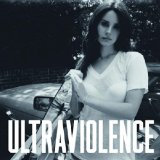 “Born to Die” was an ultimately deceitful album as it was based on the promise that was “Video Games”. Heard only six months before the album debuted and accompanied by the not-quite-equally but still utterly beguiling “Blue Jeans”, these were surely a tantalisingly small taste of what was to come. Thoroughly retrofit, other-worldly and desolate songs with melodies that made you stop what you were doing. “Born to Die”was still a good album but is not the one that many craved or expected and it divided opinion sharply, featuring Del Rey rapping about highly-caffeinated fizzy drinks, repetitive hip hop sounds and samples and a large count of songs that could have just as easily been Britney/Gaga/Rihanna. It was dominated by a production style that can best be described as bombastic and cynical. It also sold in excess of seven million copies and it can safely be presumed that with this came a clout that allowed Del Rey and her choice of producers to finally deliver on that initial promise, as least partially. “Ultraviolence” is the sound of an artist, I suspect, being freed up to fulfil their own creative desires; that sound is both very different from what came before and also very much the same.
“Born to Die” was an ultimately deceitful album as it was based on the promise that was “Video Games”. Heard only six months before the album debuted and accompanied by the not-quite-equally but still utterly beguiling “Blue Jeans”, these were surely a tantalisingly small taste of what was to come. Thoroughly retrofit, other-worldly and desolate songs with melodies that made you stop what you were doing. “Born to Die”was still a good album but is not the one that many craved or expected and it divided opinion sharply, featuring Del Rey rapping about highly-caffeinated fizzy drinks, repetitive hip hop sounds and samples and a large count of songs that could have just as easily been Britney/Gaga/Rihanna. It was dominated by a production style that can best be described as bombastic and cynical. It also sold in excess of seven million copies and it can safely be presumed that with this came a clout that allowed Del Rey and her choice of producers to finally deliver on that initial promise, as least partially. “Ultraviolence” is the sound of an artist, I suspect, being freed up to fulfil their own creative desires; that sound is both very different from what came before and also very much the same.
“Cruel World” opens the album in a grandiose and gloating fashion- at nearly 7 minutes long it declares its own riskiness loudly and with an obvious pride. Dan Auerbach of The Black Keys has, along with Del Rey, decided the sonic template; he produced the majority of the album, and it is represented in full here and is adhered to pretty much throughout. Out go the r’n’b beats, trip-hop, the clattering metallic percussion and the sugared spoken-song rhymes to be replaced by live drums, guitars with serious intent and a dazed and strung out Del Rey yowling ‘you’re fucking crazy – you’re crazy for me’. Leading to her best melody second only to “Video Games”, “Ultraviolence” is a song that could have come at any point during her discography and would be considered one that encapsulates her ability to pull you close and watch the collision. Its controversy is ridiculous and highly theatrical but the beauty is undeniable. “Shades of Cool” is, again, a gorgeous swooping waltz with a falsetto chorus and a line in haughty cattiness that confirms Del Rey’s refusal to play the feminist role in a way that has and will alienate many. The guitars deliriously shred the languid mood to pieces in the final minutes of the song and it’s her best attempt at a Bond theme thus far.
The initially deceptively empty and messy sounding “West Coast” is in many ways “Ultraviolence”’s biggest triumph. As the first piece of music heard from the album it threw many with its refusal to stick to a steady tempo – slowing down dramatically in the chorus only to speed up again- and vocals that during the verses were tight and gulped. It wasn’t the Lana Del Rey we were used to hearing and quite possibly one we didn’t like but repeated listens reveal a thrillingly compact and almost perversely catchy pop song that confirmed that this time around, she wasn’t interested in an easy win. “Brooklyn Baby” is the album’s only concession to light. A track that twirls and revels in a 1960’s, a near Saint Etienne folk-pop confection that has a depth and warmth that isn’t evident at first listen – another slow burner in an album that has many. “Brooklyn Baby” does however highlight a sticking point with Del Rey and that is not her ability as a performer, she sounds far more confident and poised on this album than the last, but her abilities as a song writer. It’s not clear whether the song is bemoaning current-day hipsters or an actual celebration of the beat movement of that time, either way the writing is hackneyed and clunky to the point where it seems to be intentional but then again, I suspect not.
Daddies, diamonds, death, drugs (lots and lots of drugs) and little red dresses have all been referred to by the time we reach the album’s half way point but because of the exceptionally strong songs and performances they don’t grate in the way that they could have done. The Lana Del Rey key-words remain, her stock phrases that have been there from the beginning but still, somehow, have allowed her to create new music without it becoming ludicrous. Because of the baggy and lifeless combination of “Sad Girl” and “Pretty When You Cry” ( those titles!) being stuck together in the middle of the album though, this aspect of the Lana Del Rey persona – wronged woman, sad woman, loves her men bad woman – ultimately and inevitably becomes boring. The venomous “Fucked my Way Up to the Top” and almost brilliant “Money Power Glory” which is let down only by a repetitive and not fully realised chorus, restores some of the energy but it never quite reaches the highs of its first half.
“Ultraviolence” has just about secured Lana Del Rey’s status as An Artist to be Taken Seriously, irritating to many maybe but difficult to deny or avoid given the force at which her vision here takes its form. It’s not an easy album on any level – sonically, lyrically or vocally and the playfulness that littered “Born to Die” has all but evaporated and is replaced by a looser, insidious malaise and increasing desperation which only very occasionally is flushed out by a crystalline piano ballad ( the very lovely “Old Money”) or a laughed-out-loud line. It’s hard to say whether the closing track, a cover version of Nina Simone’s “The Other Woman”, is a ridiculously on-the-nose piss-take on the Del Rey construction or the perfect finale for a pop star whose talent has been to locate something that has been dormant for some time, an ability to transcend cultural dictates and become an individual. Either way it doesn’t really matter, there is music here to daydream deeply to and when done, return to life which will never be as dangerous, sick and romantic as the world that Del Rey has created here. That is indeed, quite a talent.
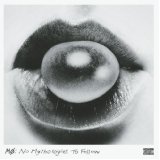 On paper at least it would appear that MØ is unlikely to deviate much from what is a well-established and superior brand of Scandi-pop. With this album being three years in the making, the Copenhagen based twenty-five year old has had time to hone her preferred blend of r’n’b pop with trap leanings and an occasional wander into 1960s reverb-heavy girl group territory. Her competition is undoubtedly strong; Lykke Li, Annie, Robyn and Oh Land to name a few of the female singers who have already demonstrated their worth in the genre over the last decade. But MØ can thankfully hold her own more often than not on this, her debut album, “No Mythologies to Follow”.
On paper at least it would appear that MØ is unlikely to deviate much from what is a well-established and superior brand of Scandi-pop. With this album being three years in the making, the Copenhagen based twenty-five year old has had time to hone her preferred blend of r’n’b pop with trap leanings and an occasional wander into 1960s reverb-heavy girl group territory. Her competition is undoubtedly strong; Lykke Li, Annie, Robyn and Oh Land to name a few of the female singers who have already demonstrated their worth in the genre over the last decade. But MØ can thankfully hold her own more often than not on this, her debut album, “No Mythologies to Follow”.
Album opener “Fire Rides”, one of the new songs which represent the minority here, as over half the album has already been released, is a perfect introduction to MØ’s style and sound. Following a near acapella flurry of swooping, angelic vocals, stop-start post Timbaland beats hit hard against the melancholic melody line before a rave synth adds another, more angular dimension to the chorus. It may sound crowded but it’s a sublime merging of styles. Most impressive of all though are MØ’s vocals, full bodied and soulful with an impressive and expressive range that her contemporaries can’t match. The apocalyptic metaphors on “Fire Rides” are bought to life with her possessed performance on the haunted and yearning verses:
‘What’s it gonna be with the violence?
What’s it gonna be when the fire rides in?
What’s it gonna be when the sound of you and I die out?’
“Maiden”, “Pilgrim” and “Waste of Time” are all previous singles and further represent MØ’s fixation with the music she grew up with. Much like Grimes, contemporary futuristic r’n’b and hip hop have been essential influences to her along with electronic pop music and an ability to subvert these genres subtly and without irony but with heart; this is her specialty. “Maiden” introduces a classic nylon-strung guitar sound that crops up more than once in the album’s playing time and it’s to her credit that she applies these odd stylistic flourishes to her sound and makes it something that is identifiable to her and without contrivance. Producer superstar Diplo appears on the brassy and low-slung “XXX 88” and it’s maybe not surprising that it’s the most commercial moment here but also completely in keeping with the sonic themes of the album. “Don’t Wanna Dance” and the slowly chiming “Never Wanna Know” in particular pay a brilliant homage to Motown and girl group dilemmas and sonics. Both tracks are wonderfully conceived and a perfect for MØ’s longing and alienated vocals, “Never Wanna Know” has a divine spoken interlude that draws the line from The Shangri-Las to All Saints, it may be an easy pull but it certainly hits in all the right places
‘All of a sudden I was brain dead and rotten
With thoughts of you and I
And I wanted to ‘goodbye’ you
But the nights are so cold
How I missed your human soul
I would never let you go if I’d been a little older’
he less successful songs here, and there only a few, are also the newer ones. “Red in the Grey” has a pretty straight forward trap arrangement but is more of a re-tread of earlier material rather than a fresh update. “Dust is Gone” continues with the sixties thread but the lack of a strong song and Lana Del Rey aping render it redundant karaoke. The clanking and clapping “Walk this Way” and the gorgeous “Slow Love” with its opulent, misty funk fare much better. Compare any of these tracks though to the older and eccentric “Glass”, the closing song here, with its deeply disconcerting festive synth hook, massive pop chorus and general oddness, and these tracks fail to fully measure up.
“No Mythologies To Follow” may not be as instantly gratifying as one may have expected given a genre that all too often and easily is written off as disposable. This is an album that initially is difficult to warm to and a fairly steady mid tempo throughout can provoke a feeling of sameness. This proves to be a strength as opposed to any kind of weakness however as repeated listens reward enormously as buried melodies and hidden embellishments are excitingly revealed over time. MØ has already managed to establish her own style and found a voice which allows her access to the hallowed music hall of Swedish Pop (a copy of Abba’s “The Visitors” is given to all wannabes as homework) but she also cleverly sets herself apart from her contemporaries effortlessly and with some aplomb. MØ is indeed something quite special: an awkward and talented woman challenging her inhibitions and desires through frequently beautiful and slow burning music that is, at times, equally awkward.
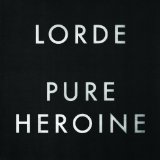 The troubling thing about Lorde is that she’s only sixteen, about to turn seventeen at the time of writing. This, her debut album, sounds like the work of someone in their mid-twenties which isn’t exactly middle aged either but the experience that comes with age does help reinforce artistic credibility, it seems. But this a prejudice and should therefore be discounted. Childhood and very early adulthood is experienced differently based on environmental and social factors and kids are no longer just kids; the definition has become blurred. Exposure to almost everything is effortlessly achieved whether you are in control of what you are experiencing or not and kids now worry about feeling too old, to quote Lorde here, at the age of 16. Her worry is our worry, her talent is that she knows how to create brilliant, massive pop songs.
The troubling thing about Lorde is that she’s only sixteen, about to turn seventeen at the time of writing. This, her debut album, sounds like the work of someone in their mid-twenties which isn’t exactly middle aged either but the experience that comes with age does help reinforce artistic credibility, it seems. But this a prejudice and should therefore be discounted. Childhood and very early adulthood is experienced differently based on environmental and social factors and kids are no longer just kids; the definition has become blurred. Exposure to almost everything is effortlessly achieved whether you are in control of what you are experiencing or not and kids now worry about feeling too old, to quote Lorde here, at the age of 16. Her worry is our worry, her talent is that she knows how to create brilliant, massive pop songs.
There are two very big songs on the seductive, and that it is the right word, “Pure Heroine”. The bigger of the two, “Tennis Court”, begins with Lorde asking the question ‘don’t you think that’s it boring when people talk?’ Although the statement itself is nonsensical without context, she has already stared you straight on and in the space of five seconds you’re captive. Against a bare hip hop beat, wide screen synths and the lonely sound of a repeated and dominant ‘blip blip’ from an imagined early computer game (Atari tennis would be topical of course), the steely-eyed verse can only serve as a perfect appetiser for the sublime chorus. Punctuated by a drunk and slowed down ‘yeah!’ borrowed from the current rap sound favoured by ASAP Rocky and already hijacked by Miley, Lorde is intoxicatingly confident and dominates the song’s boulder-like hook. Interesting that the current number one in the USA, the appropriately majestic “Royals”, and the second very big song here, is lyrically a reaction against hip hop culture which, in the States at least, is a dominant chunk of popular culture (see Miley again). It’s all rumbles and clicks, equal parts Peggy Lee, Lana Del Rey and Lykke Li (vocally they sound very similar, you would never imagine that Lorde is American let alone a New Zealander) but musically it’s as much a classic Rihanna song as anything else currently in the top ten, more “Umbrella” than “Only Girl in the World”.
The remaining eight songs on the self-written “Pure Heroine” are variations on the musical and lyrical themes established in these two songs and apart from a couple of misfires (the album closer ,”A World Alone”, is too heavy-handed in its attempts to demonstrate one of the album’s key subjects of alienation) the quality is very high throughout. The cleverly repetitious “Ribs” is the only track with a recurring and solid dance beat but is drenched in teen melancholy and on the booming and hypnotic “Team”, Lorde lyrically avoids the tirelessly reproduced ‘up in the club’ line by announcing ‘I’m kinda over being told to throw my hands in the air’. “Glory and Gore”, probably owing the most to Del Rey (the ultimate magpie) divides verses up sonically between hip hop via The XX cut with indie pop percussion practices of seemingly banging hard on a saucepan. These clever and effective musical tricks, and there are many, help what could have been a samey-sounding set remain fresh and inventive. “White Teeth Teens” has a 60’s girl group roll and sneer until the confessional line ‘I’ll let you into something big, I’m not a white teeth teen, I tried to join but never did, the way they are and the way they seem; it’s something in the blood’. “Buzzcut Season” contains the lovely line ‘I remember when your head caught flame, it kissed your scalp and caressed your brain’ and demonstrates Lorde’s skill with words, lyrics that can create a fluid and beautiful image.
The worldwide success of Ellie Maria Lani Yelich-O’Connor, her real name, puts her in the post, post-modern situation of becoming what she appears to at least mock here and, at times, hate. A star who is, because of her ability to not only perform but also write and reproduce, is a highly desirable commodity. There is an innocence to Lorde’s “Pure Heroine” which she will be unable to return to, her school friends and their anti-gang, their language and rejection of the mainstream; now she is the mainstream. Her ability to compose and express these experiences in such an accessible and grounded but haunting style may be her downfall but our gain. Ultimately Lorde will just have to decide just how far she wants to go as at the moment there really would appear to be no limits for this extremely talented and intriguing young woman.
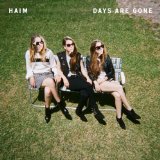 Haim are in a minority of artists who also form part of the majority where influences from chart music over the last thirty years can be heard clod-hopping all over their work but who are also pushing forward musically, and sound strikingly different from their current, retro-obsessed contemporaries. The three twenty-something sisters from LA write their own material and play their instruments, they aren’t an electronic act and neither do they aspire to be urban makeover superstars. But there are some fascinating deep and dark synths here and an R’n’B spirit is shadowing almost every song to the point where it does, albeit briefly, finally jump into the driving seat. “Tango in The Night”-era Fleetwood Mac, Prince, Sheryl Crow, The Police and eighties soft rock are the most dominant and easily-spotted influences for the Haim sisters debut though. Time and again you’ll hear these mentioned in reference to the group but importantly at the core of “Days Are Gone”, is a sound that is all theirs.
Haim are in a minority of artists who also form part of the majority where influences from chart music over the last thirty years can be heard clod-hopping all over their work but who are also pushing forward musically, and sound strikingly different from their current, retro-obsessed contemporaries. The three twenty-something sisters from LA write their own material and play their instruments, they aren’t an electronic act and neither do they aspire to be urban makeover superstars. But there are some fascinating deep and dark synths here and an R’n’B spirit is shadowing almost every song to the point where it does, albeit briefly, finally jump into the driving seat. “Tango in The Night”-era Fleetwood Mac, Prince, Sheryl Crow, The Police and eighties soft rock are the most dominant and easily-spotted influences for the Haim sisters debut though. Time and again you’ll hear these mentioned in reference to the group but importantly at the core of “Days Are Gone”, is a sound that is all theirs.
The first third of the album is home to all four heavily-promoted singles and with the possible exception of the worryingly Shania Twain tendencies of the overly-perky “The Wire” (not forgetting the Eagles “Heartache Tonight” drum intro – Ed), all still sound spring fresh, funky and with plenty of space for instruments and vocals to stretch out and sparkle. “If I Could Change your Mind” has a fidgety, skipping melody line which brings to mind freestyle electro pop from eighties artists like Cover Girls and Lisa Lisa, and the title track, a surprising co-write with UK new-house artist Jessie Ware, has plenty of tension and bustles along with an urgent agenda and rhythm.
It’s on the futuristic R’n’B of the oddly titled “My Song 5” where the band really surprise. If this were the lead single from Beyonce’s near-mythical, possibly forthcoming album or even more excitingly, another attempt at a comeback from Missy Elliott then either would be rightly lauded. Three seconds of dirgy, descending buzz bass and then massive slow pounding drums introduce vocals which mimic Wendy and Lisa doing their Purple Rain residence; dead eyed and dangerous, pitch black promising ‘honey I’m not your honey pie’. A dizzy and delirious middle eight where tight angelic harmonies flip forward and then just disappear and it’s one of the one of the most exciting and weird four minutes you’ll have experienced since the first time you heard “Get Ur Freak On”.
Continuing with the genuinely thrilling and experimental final third of “Days Are Gone” where the sound that we’d already heard from the band is both intensified and stripped away, “Go Slow” is a gorgeous and gently skulking “True Colours” but with all of the sonic fuzz wiped away. “Let Me Go” is the angriest sounding moment here, building from the sixties girl group chants in the dark into a tribal thud and clanking, dubby outro and “Running If you Call my Name” closes the album in a traditional way as a down-tempo mass of drums, guitars and those beautiful harmonies.
“Days Are Gone”, maybe more than anything else, is very welcome at this point in pop culture. Pop music is more female-driven and dominated than ever before; Gaga is eaten by Lana is eaten by Taylor is eaten by Miley. It happens so quickly and all have their place and merit but none sound like Haim. Image, although clearly very much considered, seems less of an issue to the group than the music itself, you can listen to the songs here and you don’t necessarily feel hijacked by a carefully constructed persona and brand as you may do when listening to “Born This Way” or “Video Games” say. This is a charismatic and superior release, real musical talent and love of performing that doesn’t sound cynical or short-sighted. Probably most satisfying of all, you can almost guarantee that this really is only the beginning for Haim and the best is still to come.
Out now.
If you check out MusicRiot regularly, you’ll know that our contributors have one thing in common; they’re all passionate about (maybe bordering on obsessed by) music. All of the Riot Squad (John Preston, Louie Anderson and, most recently, Klare Stephens) love music of all styles and the reason we do this is because we want to share our passion and maybe get a few more people to listen to the music we love, whether it’s live or recorded. Also, because music is such a personal thing we like to bring that element into our contributions; opinions are always subjective, but at least we’re upfront about it. Often it can feel like shouting in the dark: then you have a weekend like the one I’ve just had.
Last week I published a review of the excellent album “Closer than you Know” by The Kennedys and I was invited to review their gig at Kings Place in London on Friday. I also had a gig lined up for Sunday night, going to watch the Billy Walton Band in High Barnet with some good friends. Both gigs were superb in very different ways; you can read The Kennedys review and previous Billy Walton Band reviews here on MusicRiot and work out for yourself that I’m impressed.
The live performances by these bands, however, are only part of the story. All of the musicians at these two gigs (Pete and Maura Kennedy, Billy Walton, William Paris, Rich Taskowitz and John D’Angelo) are extremely gifted musicians who love what they do and love to interact with their audience personally and online. Both bands mix with the audience when they aren’t actually performing (and sometimes when they are; yeah that’s you Billy and Rich) and have a huge amount of respect for their fans, fellow musicians and songwriters.
Both gigs were superb in different ways; The Kennedys stripped down their songs to arrangements for two acoustic guitars and two voices while the Billy Walton Band played raucous r’n’r (and blues and soul and the rest) in the way that bands from New Jersey do. Both bands were happy to play requests from the audience regardless of the setlist they had prepared. Most importantly, both bands were obviously having a good time. So far, so good, but excellence is pretty much what I expected from these two bands and this weekend was about much more than that.
I’ve been reviewing gigs in London and elsewhere for MusicRiot for six years now and sometimes it can be a bit depressing; you watch incredibly gifted bands and artists performing to audiences which just scrape into three figures and most of them are friends of the band. I’ve been to blues gigs where the majority of the audience at least twice as old as the musicians. It was great to see two very different gigs this weekend where the ages of the audience ranged widely and everyone was there to hear great live music and have a good time. And that brings me on to the reason why we all contribute to MusicRiot.
We don’t ignore the established bands at MusicRiot; we had two reviews of the Daft Punk album last week and we’ve reviewed albums by Bruce Springsteen, Scissor Sisters, Lana del Rey and Saint Etienne in the last year or so. We also love to discover a diverse range of bands and artists that you might not have heard of and tell you all about them so we’ll carry on telling you all about artists like The Kennedys, the Billy Walton Band, MS MR, Sally Shapiro, Tomorrow’s World, Lilygun, Stoneface Travellers, Dean Owens and many more. We’ve even got some pretty good photos for you to look at.
If there’s one lesson that I’ve learned from six years at MusicRiot it’s this; whatever you hear on daytime radio, there’s always good music out there if you know where to look and that’s why the Riot Squad do what they do. And thanks to Richie Taz for the title.
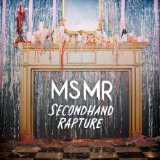 I reviewed MS MR’s quite special debut 4-track EP “Candy Bar Creep Show” late last year and may have even, in a moment of rare generosity, given it 5 stars. During its release the boy-girl, goth pop duo from New York were already speaking excitingly about their first album being almost ready to go and I remember thinking at the time, that’ll be good, something to look forward to. Well now it’s here and, although some of it’s good, it’s not really that special.
I reviewed MS MR’s quite special debut 4-track EP “Candy Bar Creep Show” late last year and may have even, in a moment of rare generosity, given it 5 stars. During its release the boy-girl, goth pop duo from New York were already speaking excitingly about their first album being almost ready to go and I remember thinking at the time, that’ll be good, something to look forward to. Well now it’s here and, although some of it’s good, it’s not really that special.
“Hurricane” was one of the best pop singles of last year; it swaggered beautifully. Lizzie Plapinger’s strong, clear vocals moaned about the foul contents of her mind; it was a helluva song. It was part of the aforementioned EP, the other three remaining tracks being equally strong, if subtle, shifts on the same sonic theme. It’s a big mistake though to include all 4 songs again here and especially to front load the album with them. Apart from another couple of songs, which also include the bombastic single “Fantasy”, again released as single before this album, the best tracks here are, disappointingly, still these same 4 songs and the decision for them to dominate the first quarter of the album only succeeds in hammering this point home.
Of the remaining 8, unheard, tracks only “Think of You”, which follows the same, already established, template with a catchy-as-hell chorus that, instead of being bellowed, is thankfully more reflective and the Lana Del Rey-indebted ballad “BTSK”, which actually stands for Big Teeth, Small Kiss (you can see why they decided to abbreviate it), has drama and build with another big but dumber chorus, comes close to the quality heard eight months ago on “CBCS”. Like Florence’s second album in particular, which MS MR’s brand of broad, glam pop has, rightly to a point, been compared to, the set up for every track is almost identical and that kind of repetition can of course work, but only if the songwriting is strong enough to support it. “Salty Sweet” is the one variation musically and is a lilting, feather-light reggae mistake. A song like “Twenty Seven” (as in the age, at which it’s hoped one will live past) feels so set up to soundtrack a Tumblr account of pop cultural clichés, is too shallow and under-written to penetrate in the way that it wants to. By the end of the album one song blurs into another and any strong sense of identity that may have been established at the beginning of the album has all but disappeared.
There’s a sense here that maybe there was a pressure to get this album out as soon as possible; MS MR have the feeling of a band who are very of the moment and dangerously hip. I’m sure that their moment hasn’t passed, half of this album is certainly good and enjoyable enough to make an impression and get them noticed, but if they want to headline Glastonbury, their ultimate dream, they’re going to need more than 1 EPs worth of cracking material so let’s hope that they can deliver on that initial promise.
 During a rare break from the monotonous grind of putting together a website, I was talking to John Preston (JP to his friends) as we sipped Pina Coladas around the indoor pool at Riot Towers the other day. It came as quite a surprise to discover that we were both fans of Billie Ray Martin. John reviewed her recent Opiates album here on Musicriot and I loved Electribe 101 way back in the days when I spent my evenings behind the wheels of steel. So why not ask her to contribute to our High Fives feature? I’m pleased to say she was happy to get involved and these are Billie Ray Martin’s Top 5 tracks of 2012.
During a rare break from the monotonous grind of putting together a website, I was talking to John Preston (JP to his friends) as we sipped Pina Coladas around the indoor pool at Riot Towers the other day. It came as quite a surprise to discover that we were both fans of Billie Ray Martin. John reviewed her recent Opiates album here on Musicriot and I loved Electribe 101 way back in the days when I spent my evenings behind the wheels of steel. So why not ask her to contribute to our High Fives feature? I’m pleased to say she was happy to get involved and these are Billie Ray Martin’s Top 5 tracks of 2012.
“Ed-Ged-Osis”(Todd Terje edit) – Lindstrom
Lindstrom (Hans-Peter Lindstrom) is a Norwegian composer and producer who established his Feedelity label in 2002. This track is from the album “Smalhans” released in November 2012 and is a collaboration with fellow-Norwegian Todd Terje. The track is built around a long sinuous bass riff and melodies built around synth arpeggios which always seem to be trying to get back to starting point but never quite making it.
Torgny is Norwegian and very enigmatic. Even the website and Facebook page tell you very little about Torgny; I’m guessing the implication is that we should concentrate on the music, which is fine by me. “I Came Here” is a fascinating blend of Nordic indie with dance elements creeping in as the song develops whilst retaining a glacial feel from start to finish. It’s faintly disturbing, particularly when it’s tied in to the images in the video, but it’s absolutely fascinating.
Originally released in 2010, this has been reactivated with a number of mixes this year. Model 500 is a pseudonym of the Detroit techno pioneer Juan Atkins, making a comeback over 20 years after his early, and incredibly influential, work. Of the 2012 mixes, the Debukas remix is attracting most of the attention and is certainly the most dancefloor-friendly. Great return to form from a genuine innovator.
Terranova has been musically active since 1996 and has been involved in collaborations with Cath Coffey, Nicolette Krebitz, Tricky, Ari Up and, not unsurprisingly Billie Ray Martin and has also done a huge amount of remixes. This track is from the album “Hotel Amour” on Kompakt Records and features Nicolette Krevitz.
You just can’t get away from Lana del Rey this year. She’s everywhere and it’s not difficult to see why. The songs are great and the David Lynch feel of the music and visuals make this a very special package. This song is from the “Paradise Edition” of one of this year’s classic albums, “Born to Die” and has classic stamped all the way through it.
Many thanks to Billie Ray Martin for this eclectic and beautiful selection of songs; keep an eye out for the next contribution tomorrow. Who will it be this time?




